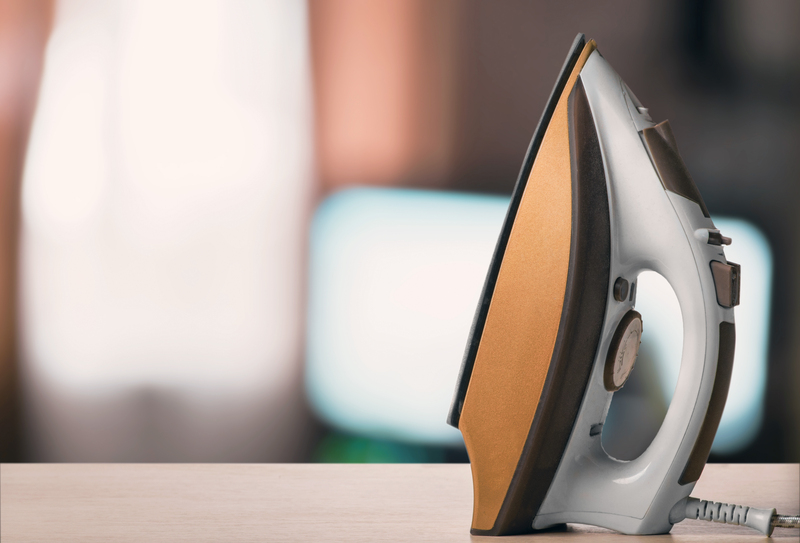Stay Mould-Free: How to Clean Window Sills
Posted on 25/08/2025
Stay Mould-Free: How to Clean Window Sills
Keeping your home mould-free is essential for both health and comfort. One area particularly susceptible to mould growth is the humble window sill. This overlooked spot can quickly become a breeding ground for unsightly, stubborn mould that threatens indoor air quality and damages your home's integrity. If you're wondering how to clean window sills effectively and prevent mould recurrence, you've come to the right place! Read on for a comprehensive, SEO-optimized guide on cleaning, preventing, and maintaining pristine, mould-free window sills.
Why Do Window Sills Attract Mould?
Mould thrives in damp, poorly ventilated environments. Window sills often collect condensation, dust, and debris, providing an ideal habitat for mould spores to settle and spread. Several factors contribute to this issue:
- Condensation: Moisture from temperature differences accumulates on the cool surface of window panes and sills.
- Poor ventilation: Insufficient airflow encourages humidity and moisture to linger.
- Neglected cleaning: Dust and organic matter supply nutrients for mould spores.
- Leaking windows: Faulty seals and gaps allow rainwater to seep in, exacerbating the problem.
Knowing why window sills are prone to mould helps you target both cleaning and prevention strategies for successful, long-lasting results.

Essential Supplies for Cleaning Mouldy Window Sills
Before you tackle the job of cleaning your window sills, assemble the following essential tools and cleaning agents for optimal results:
- Protective gloves (preferably rubber or latex)
- Safety goggles to avoid irritation from spores or cleaning chemicals
- Face mask (especially for severe mould infestations)
- Soft-bristled brush or old toothbrush
- Microfiber cloths
- Spray bottles for cleaning solutions
- Sturdy plastic scraper (for stubborn spots)
- Baking soda and white vinegar (natural cleaning agents)
- Hydrogen peroxide or mild bleach solution
- Wash bucket
Pro-Tip: *Never mix bleach with vinegar or ammonia!* This produces dangerous fumes. Always use chemicals in a well-ventilated area to avoid exposure to toxic substances.
Step-by-Step Guide: How to Clean Window Sills
Follow these effective steps to remove mould from your window sills and restore a fresh, healthy atmosphere to your living spaces:
Step 1: Preparations
- Open your windows to increase ventilation and reduce inhalation risks.
- Wear protective gear (gloves, mask, goggles) before starting.
- Remove blinds, curtains, and plants to avoid contamination.
Step 2: Dry Clean the Area
- Use a dry cloth or small handheld vacuum to remove loose dust and debris from the sill and surrounding areas. This step prevents spreading mould spores during wet cleaning.
Step 3: Apply a Cleaning Solution
Choose one of the following cleaning agents for your window sill mould:
- Baking Soda + Water: Mix 1 tablespoon of baking soda with two cups of water. Spray liberally onto the affected area.
- White Vinegar: Pour undiluted white vinegar into a spray bottle. Apply directly to mould growth and let it sit for 30-60 minutes.
- Hydrogen Peroxide (3%): Spray directly onto mouldy patches, ensuring full coverage.
- Bleach Solution: For severe infestations, mix 1 part bleach to 10 parts water. Test a small area for colorfastness first.
Allow your chosen solution to sit for 10-60 minutes, depending on the severity of mould.
Step 4: Scrub and Remove Mould
- Use your brush or toothbrush to scrub the sill, paying extra attention to grooves and corners.
- Wipe away residue with a damp microfiber cloth.
- Use a scraper for persistent spots, taking care not to damage the surface.
Step 5: Rinse and Dry
- Rinse the window sill with clean water to remove all cleaning agent residue.
- Wipe thoroughly dry with a fresh cloth. Removing all moisture is crucial to prevent recurrence.
Step 6: Dispose of Contaminated Items
- Safely discard used cloths and gloves to prevent spreading spores elsewhere in the house.
Repeat weekly for ongoing mould prevention, especially in humid or rainy climates.
Natural vs. Chemical Cleaning: Which Is Better?
When you're learning how to clean window sills, you might wonder whether natural or chemical cleaners are more effective.
- Natural solutions like vinegar and baking soda are environmentally friendly and safe for children and pets. They are effective for light to moderate mould buildup.
- Chemical agents such as bleach and hydrogen peroxide deliver potent mould-busting power for heavy infestations but must be used with caution.
Ultimately, the best solution depends on the extent of your mould problem, your household's sensitivities, and your environmental preferences. Combining thorough cleaning with natural solutions is often sufficient for routine upkeep.
How to Prevent Mould Growth on Window Sills
Ongoing care is key to staying mould-free. Once you've cleaned your window sills, follow these expert prevention tips:
- Increase Ventilation: Open windows regularly or use fans to minimise humidity buildup.
- Maintain Dryness: Wipe down condensation from sills, glass, and frames every morning during damp seasons.
- Use a Dehumidifier: In persistently moist rooms, a dehumidifier drastically reduces the chance of mould formation.
- Repair Leaks Promptly: Check window frames and seals annually for wear or gaps and fix any issues immediately.
- Regular Cleaning: Incorporate window sill cleaning into your monthly or bi-weekly cleaning routine to eliminate dust and organic debris.
- Seal Wooden Sills: Applying a protective, mould-resistant wood sealant prevents absorption of moisture.
- Use Mould Inhibitors: Wash sills occasionally with special anti-mould products available in most supermarkets or hardware stores.
Bonus Tip: Houseplants
Some houseplants, like English Ivy and Peace Lily, help purify the air and reduce mould spore levels. However, be mindful that excess watering can increase humidity and raise mould risks on nearby surfaces--including your window sills!
How Often Should You Clean Window Sills?
Routine cleaning is vital for healthy living spaces. At a minimum, wipe down your window sills:
- Once per month in average, temperate climates
- Every two weeks during the rainy season or in humid homes
- Immediately if you spot signs of condensation, staining, or visible mould growth
Regular maintenance not only keeps your sills spotless but also prolongs their lifespan and preserves your home's overall value.
What to Do If Mould Keeps Coming Back?
Persistent mould on window sills signals an underlying issue that must be addressed. If repeated cleaning does not resolve the problem, consider:
- Upgrading window insulation to reduce condensation
- Consulting a professional for expert assessment and remediation
- Improving whole-home ventilation (bathroom and kitchen fans, trickle vents, etc.)
- Checking for unseen leaks in walls or window frames
In rare cases, recurring mould can stem from structural deficiencies. Early intervention saves money and protects your family's health.

FAQs About Cleaning Window Sills and Staying Mould-Free
Can I use household cleaners on wooden window sills?
Yes, but choose products carefully! Avoid harsh chemicals that can strip protective finishes. Instead, opt for diluted vinegar or mild soap for wood. Always dry completely after cleaning.
Are there permanent solutions to stop mould on window sills?
Permanently stopping mould requires eliminating moisture sources--fix leaks, insulate well, and improve ventilation. Regular cleaning, moisture barriers, and anti-mould treatments also help.
Will painting my window sills prevent mould?
Properly sealing and painting your sills provides a barrier against moisture, but it's not foolproof. Always address underlying humidity and clean before painting.
Is it safe to clean window mould myself?
For small to moderate patches, DIY mould removal is safe if you follow safety guidelines. However, for large or persistent infestations, consider hiring a professional mould remediation specialist.
What's the best way to prevent mould in rental properties?
Tenants can prevent mould by ventilating, regularly cleaning window sills, and reporting leaks promptly to the landlord. Landlords should maintain property conditions and carry out repairs as soon as possible.
Conclusion: Stay Ahead of Mould with Clean Window Sills
Maintaining mould-free window sills is easier than you think. With the right cleaning methods, routine maintenance, and a proactive approach to moisture management, you'll not only enjoy sparkling window sills but also healthier indoor air.
- Act swiftly at the first sign of mould--small spots can escalate quickly.
- Use natural cleaners for routine care, chemical agents for tough jobs.
- Keep your home well-ventilated and dry to discourage future mould growth.
- Incorporate window sill cleaning into your regular home cleaning schedule for lasting protection.
By learning exactly how to clean window sills and prevent mould, you'll enjoy a cleaner, fresher home all year round. Stay mould-free--starting today!




